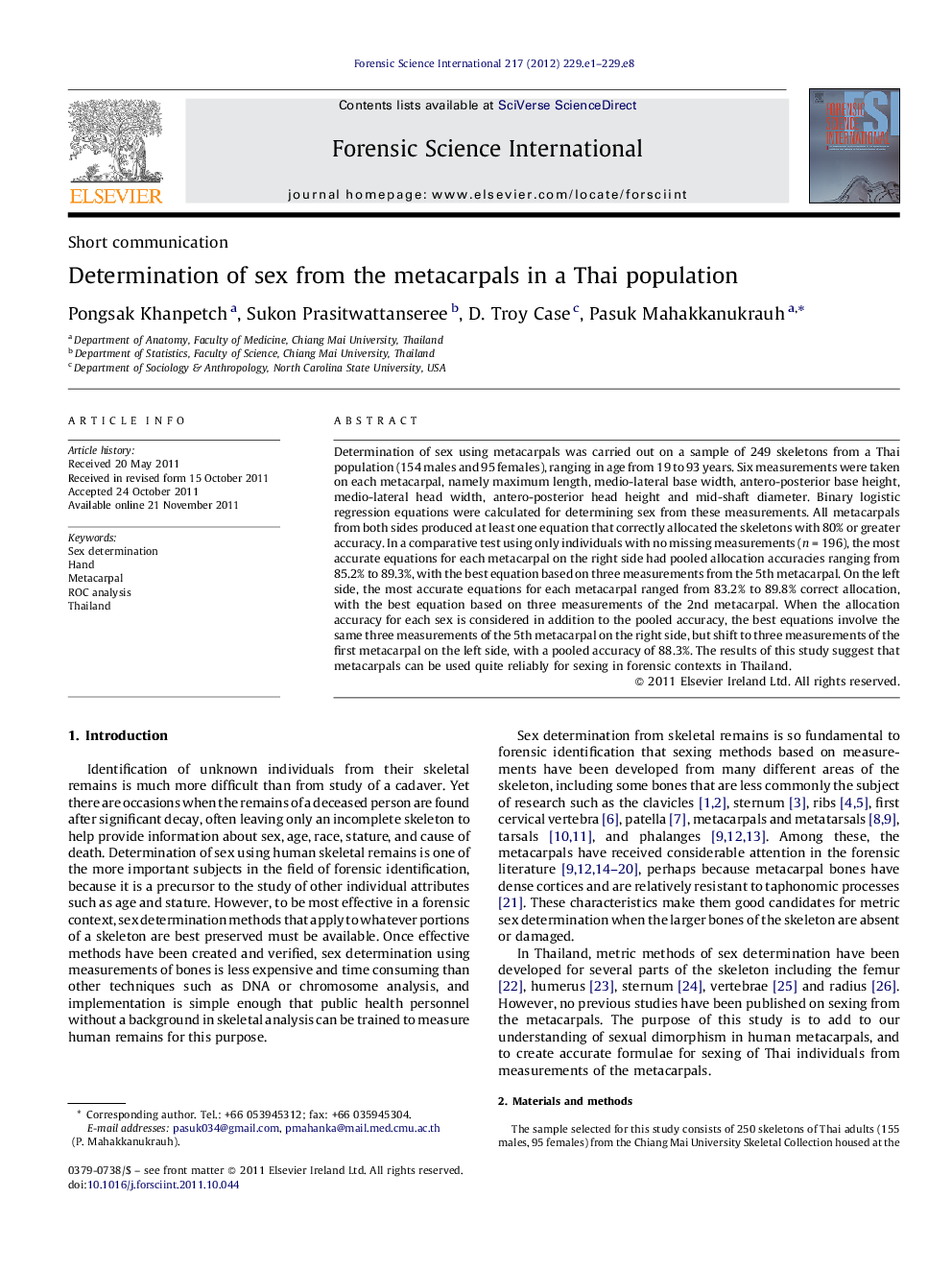| Article ID | Journal | Published Year | Pages | File Type |
|---|---|---|---|---|
| 96268 | Forensic Science International | 2012 | 8 Pages |
Abstract
Determination of sex using metacarpals was carried out on a sample of 249 skeletons from a Thai population (154 males and 95 females), ranging in age from 19 to 93 years. Six measurements were taken on each metacarpal, namely maximum length, medio-lateral base width, antero-posterior base height, medio-lateral head width, antero-posterior head height and mid-shaft diameter. Binary logistic regression equations were calculated for determining sex from these measurements. All metacarpals from both sides produced at least one equation that correctly allocated the skeletons with 80% or greater accuracy. In a comparative test using only individuals with no missing measurements (n = 196), the most accurate equations for each metacarpal on the right side had pooled allocation accuracies ranging from 85.2% to 89.3%, with the best equation based on three measurements from the 5th metacarpal. On the left side, the most accurate equations for each metacarpal ranged from 83.2% to 89.8% correct allocation, with the best equation based on three measurements of the 2nd metacarpal. When the allocation accuracy for each sex is considered in addition to the pooled accuracy, the best equations involve the same three measurements of the 5th metacarpal on the right side, but shift to three measurements of the first metacarpal on the left side, with a pooled accuracy of 88.3%. The results of this study suggest that metacarpals can be used quite reliably for sexing in forensic contexts in Thailand.
Related Topics
Physical Sciences and Engineering
Chemistry
Analytical Chemistry
Authors
Pongsak Khanpetch, Sukon Prasitwattanseree, D. Troy Case, Pasuk Mahakkanukrauh,
